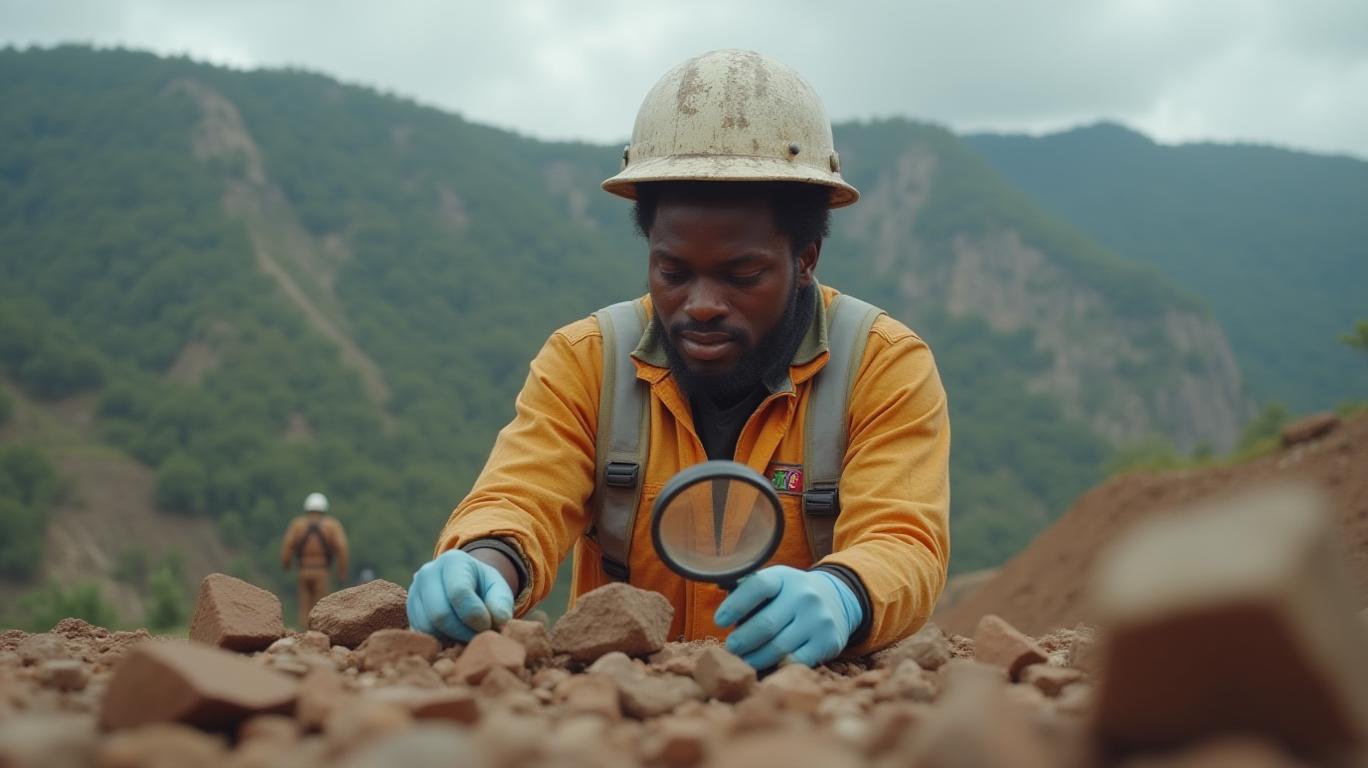The Copper Clash: Ivanhoe vs. Zijin—Can Kamoa-Kakula Deliver?
The Kamoa-Kakula copper project in the Democratic Republic of Congo (DRC) has long been hailed as one of the world's most significant copper discoveries. But now, a bitter clash between its joint venture partners—Ivanhoe Mines and Zijin Mining—has investors questioning who to believe. At stake are billions in potential value, production targets, and the credibility of claims about one of the largest copper mines under development. For investors in copper equities, this is no academic debate: it's a high-stakes battle for capital allocation. Let's dissect the claims and assess where the truth—and opportunity—lies.
The Conflict Unveiled
On May 20, 2025, Zijin Mining, which holds a 39.6% stake in the Kamoa-Kakula joint venture, issued a press release alleging “multiple roof-falling and rib-spalling incidents” in the eastern section of the Kakula underground mine. It warned of risks to production guidance and safety protocols.
, the project operator, swiftly fired back, calling Zijin's claims “inaccurate” and “unfounded.” Ivanhoe's rebuttal emphasized that ongoing inspections by geotechnical specialists found no evidence of collapsing stopes or structural pillars. Instead, it attributed the temporary suspension of operations to seismic activity causing rock falls (scaling) and damage to underground pumping infrastructure.The disagreement is more than technical. It signals a deeper rift between partners over operational control and transparency. For investors, the question is clear: Which side is closer to the truth? And what does it mean for the project's future?
Ivanhoe's Case for Credibility

Ivanhoe's position is bolstered by detailed operational data and third-party validation:
1. Investigations: Senior management and geotechnical teams have been on-site since the suspension, with no signs of structural failure. The damage—scaling and infrastructure breaks—is localized and repairable.
2. Production Resilience: While mining in the eastern section halted, milling operations continued at reduced capacity using stockpiled ore. Ivanhoe reaffirmed its 2025 production guidance of 520,000–580,000 tonnes of copper, citing confidence in its ability to compensate for delays.
3. Third-Party Backing: BMO Capital Markets, in a May 2025 report, noted that the described damage “does not appear extensive” and that the suspension “is not expected to have a material impact on annual production.”
Crucially, Ivanhoe's track record in the DRC—including its prior success with the Kipushi zinc mine—supports its operational competence. The company's transparency in scheduling a detailed update by May 27, 2025, also adds credibility compared to Zijin's abrupt, unsourced claims.
Zijin's Concerns: Justified or Overblown?
Zijin's stance is rooted in its minority position and a history of caution in joint ventures. Its warnings about safety and production are not baseless:
- Risk Management: As a partner, Zijin has a duty to highlight concerns, even if they prove overstated. The DRC's unstable political and infrastructure environment (e.g., power shortages) are valid operational risks.
- Power Dependency: Ivanhoe's reliance on hydropower from the Inga II project and diesel backups is a vulnerability. A January 2025 fire damaged 36 MW of backup generators, delaying the smelter's commissioning—a risk Ivanhoe acknowledges but deems manageable.
However, Zijin's public criticism risks undermining investor confidence unnecessarily. Without concrete evidence of structural failures, its claims may be seen as strategic posturing rather than factual reporting.
The Investment Crossroads
For investors in copper equities, the Kamoa-Kakula conflict is a microcosm of broader risks in the sector: geopolitical volatility, operational complexity, and partner dynamics. Here's how to navigate it:
1. Assess the Project's Fundamentals
- Scale and Quality: Kamoa-Kakula boasts Grade 7.0% copper reserves, one of the highest in the world. Even at reduced production, its economics are robust.
- Cost Efficiency: First-quarter 2025 cash costs of $1.69/lb (vs. guidance of $1.65–1.85/lb) suggest Ivanhoe is on track to deliver low-cost production.
- Smelter Progress: The 500,000-tonne smelter, set to start in July 2025, will eliminate refining costs and boost margins.
Note: A pullback in May 2025 coincides with the Zijin dispute, creating a potential buying opportunity.
2. Monitor Power and Partner Risks
- Power Solutions: Ivanhoe's solar and hydropower investments (e.g., 60 MW solar by late 2025, 178 MW hydro by year-end) are critical to reducing diesel reliance. Track progress on these.
- Zijin's Role: While Ivanhoe leads operations, Zijin's capital and influence remain vital. A negotiated resolution—rather than a public feud—would be optimal.
3. The Copper Price Backdrop
Copper's long-term bullish case—driven by EV adoption, renewable infrastructure, and supply constraints—is intact. Even a temporary dip caused by the dispute could create entry points.
Prices have held above $3.50/lb despite macroeconomic headwinds, underscoring demand resilience.
Conclusion: Buy the Dip, but Stay Vigilant
Investors should view the Ivanhoe-Zijin clash as a temporary overhang rather than a terminal threat. Ivanhoe's operational transparency, project quality, and third-party validation suggest the mine will meet its production targets. The May 27 update is a critical catalyst: a reaffirmed guidance could spark a rebound in IVN.TO, which has underperformed since the dispute began.
Recommendation:
- Aggressive Investors: Buy Ivanhoe now, using the dip to average down.
- Cautious Investors: Wait for the May 27 report, then consider a position if guidance holds.
- Hedge Risk: Pair exposure with a long position in copper futures to capture commodity upside.
The Kamoa-Kakula project is too large and too profitable to be derailed by a partner squabble. For those willing to look past the noise, this is a rare chance to buy a world-class asset at a discount.
Final Note: Monitor political stability in the DRC and grid improvements in Zambia/Mozambique—both could affect power supply and, by extension, production.

Comments
No comments yet